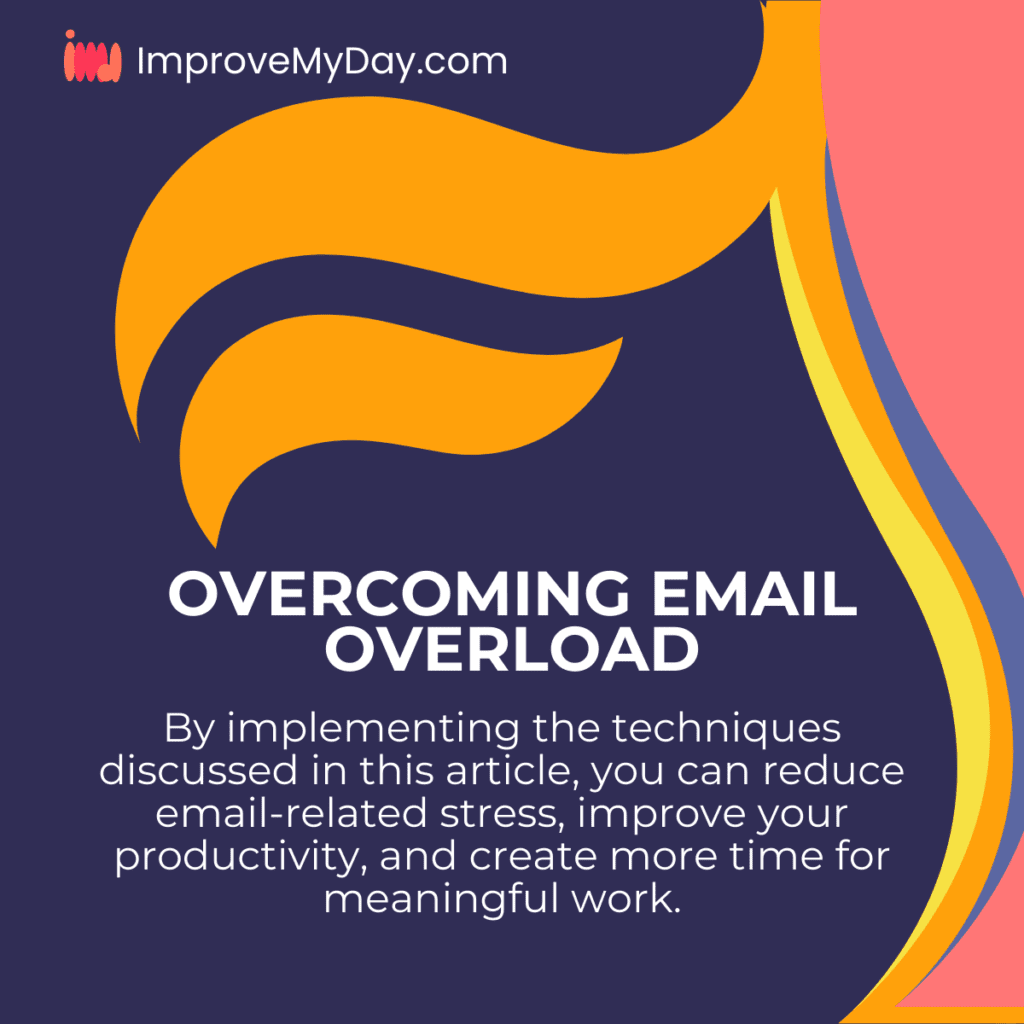Email overload occurs when the volume of incoming messages exceeds our ability to process them effectively. According to a study by the McKinsey Global Institute, the average worker spends 28% of their workweek managing emails. This constant barrage of digital communication can lead to decreased productivity, increased stress levels, and a sense of never being able to catch up.
The causes of email overload are multifaceted:
- Increased reliance on digital communication in the workplace
- The ease of sending mass emails and cc’ing multiple recipients
- The expectation of immediate responses
- Poor email management habits
Understanding these factors is the first step in developing strategies to combat email overload.
Strategies for Managing Incoming Emails
Embrace the Inbox Zero Methodology
The Inbox Zero approach, popularized by productivity expert Merlin Mann, aims to keep your inbox empty (or nearly empty) at all times. The core principle is to process emails quickly and decisively, rather than letting them accumulate.
To implement Inbox Zero:
- Set aside dedicated time to process emails
- Make quick decisions: respond, archive, delete, or defer
- Aim to touch each email only once
Filter and Categorize Your Emails
Effective filtering can significantly reduce the clutter in your main inbox. Most email clients offer robust filtering options that allow you to:
- Automatically sort emails into specific folders based on sender, subject, or content
- Create labels or tags for easy categorization
- Prioritize important emails from key contacts
Unsubscribe Ruthlessly
One of the most effective ways to reduce email volume is to unsubscribe from unnecessary newsletters and promotional emails. Take a few minutes each day to unsubscribe from emails that no longer provide value. Tools like Unroll.me can help streamline this process by allowing you to manage multiple subscriptions at once.
Techniques for Efficient Email Processing
The 2-Minute Rule
Productivity expert David Allen suggests using the 2-minute rule: if an email can be dealt with in two minutes or less, do it immediately. This approach prevents small tasks from piling up and becoming overwhelming later.
Batch Your Email Responses
Instead of responding to emails as they arrive, set specific times during the day to batch your responses. This approach allows for deeper focus on other tasks and reduces the constant context-switching that can drain productivity.
Use Templates for Common Responses
For frequently asked questions or common types of emails, create templates that can be quickly customized and sent. This technique can save significant time and mental energy.
Leveraging Technology for Email Management
Email Management Tools and Apps
Numerous tools and apps are designed to help manage email overload. Some popular options include:
- Boomerang: Allows you to schedule emails and set reminders
- SaneBox: Uses AI to prioritize and sort your emails
- Unroll.me: Helps manage subscriptions and newsletters
Automation and Rules
Most email clients offer automation features that can help streamline your inbox. Set up rules to:
- Automatically file certain types of emails into specific folders
- Flag emails from important contacts
- Archive or delete emails that meet certain criteria
AI-Powered Email Assistants
Artificial intelligence is increasingly being used to help manage email overload. Tools like Google’s Smart Compose and Smart Reply can help draft emails more quickly and suggest appropriate responses.
Developing Healthy Email Habits
Set Specific Email Checking Times
Constantly checking your email can be a major productivity killer. Instead, set specific times during the day for checking and responding to emails. This approach allows for more focused work periods and can reduce stress associated with constant email monitoring.
Avoid Constant Email Notifications
Turn off push notifications for your email on both your computer and mobile devices. These constant interruptions can derail your focus and contribute to feelings of being overwhelmed.
Practice Good Email Etiquette
By improving your own email habits, you can contribute to reducing email overload for others. Some best practices include:
- Using clear and specific subject lines
- Keeping emails concise and to the point
- Using “Reply All” sparingly
- Clearly stating any required actions or deadlines
Conclusion
Overcoming email overload is not an overnight process, but with consistent effort and the right strategies, it’s possible to regain control of your inbox. By implementing the techniques discussed in this article, you can reduce email-related stress, improve your productivity, and create more time for meaningful work.
Remember, the goal isn’t to achieve a perfect system, but to find an approach that works for you and allows you to manage your emails effectively. Start by implementing one or two of these strategies and gradually build your email management skills over time.
With practice, you’ll find that overcoming email overload isn’t just about having a cleaner inbox—it’s about reclaiming your time and attention for the things that matter most.



